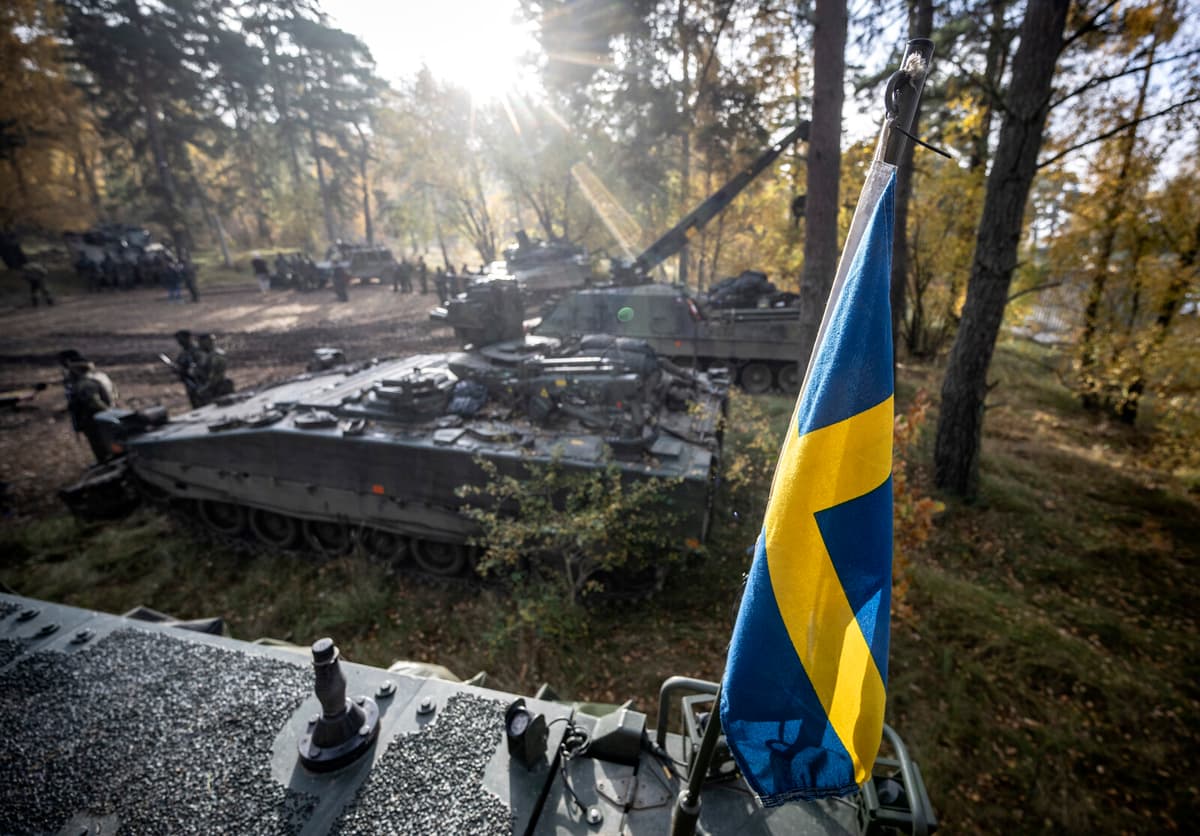The war in Ukraine shows that enormous amounts of weapons and ammunition are used in combat.
Vice Admiral Ewa Skoog Haslum, who leads the defense operations and efforts, notes that the Swedish stocks also need to be replenished.
A thing like ammunition, we may not have bought as much as we would need if we were to end up in a battle. But we have bought as much as we think we need to have to exercise and be sufficiently deterrent, she says.
In that work, the production capacity also needs to be built up so that it is in place in a war situation.
Want to "test" exercises
Weapons development is also progressing at a rapid pace. When a new sea drone is put into use in the Black Sea in the defense or the attack on Ukraine, it takes only four to six weeks for the opposing side to develop a countermeasure. This can be compared to the years - in extreme cases, decades - it takes from a defense order is made until it is delivered.
Skoog Haslum wants the defense to test unfinished products sharply in exercise activities, preferably in close cooperation with defense companies.
I think we will become better as a Defense Force, but I also think that the industry would develop faster.
This is something that the industry is also eager to do. Lena Gillström, CEO of BAE Systems Bofors and chairman of the Security and Defense Companies, is happy to send her engineers to exercises to sharpen the combat vehicles' cannon towers and artillery systems. This type of cooperation only takes place partially today, according to her.
By having a close dialogue with those who use the systems, we also have the opportunity to see what problems need to be solved, she says and continues:
I think that will be crucial to getting speed into the system.
Becomes more expensive
Sweden is far from alone in rearming, and when demand increases, so do prices. Ewa Skoog Haslum sees a risk that the increased defense allocations will be eaten up by skyrocketing costs.
Absolutely, it's a risk. And then we won't get more capability to the Defense Force. Then we won't become more dangerous to the opponent, but then we will have used the money on more expensive things instead, she says.
Facts: Sweden's defense budget
TT
This year, the military defense in Sweden has an allocation of 143 billion kronor.
It is an increase of ten percent compared to last year.
It means 2.4 percent of GDP according to NATO's way of counting.
To reach 3.5 percent (plus an additional 1.5 percent on civil defense), which is NATO's new goal, it is estimated that an additional 70 billion kronor per year will be required.
The Riksdag's parties are willing to borrow up to 300 billion kronor to quickly rearm the defense and reach the goal by 2032. 50 billion will be allocated to civil defense.
Source: Government Offices





